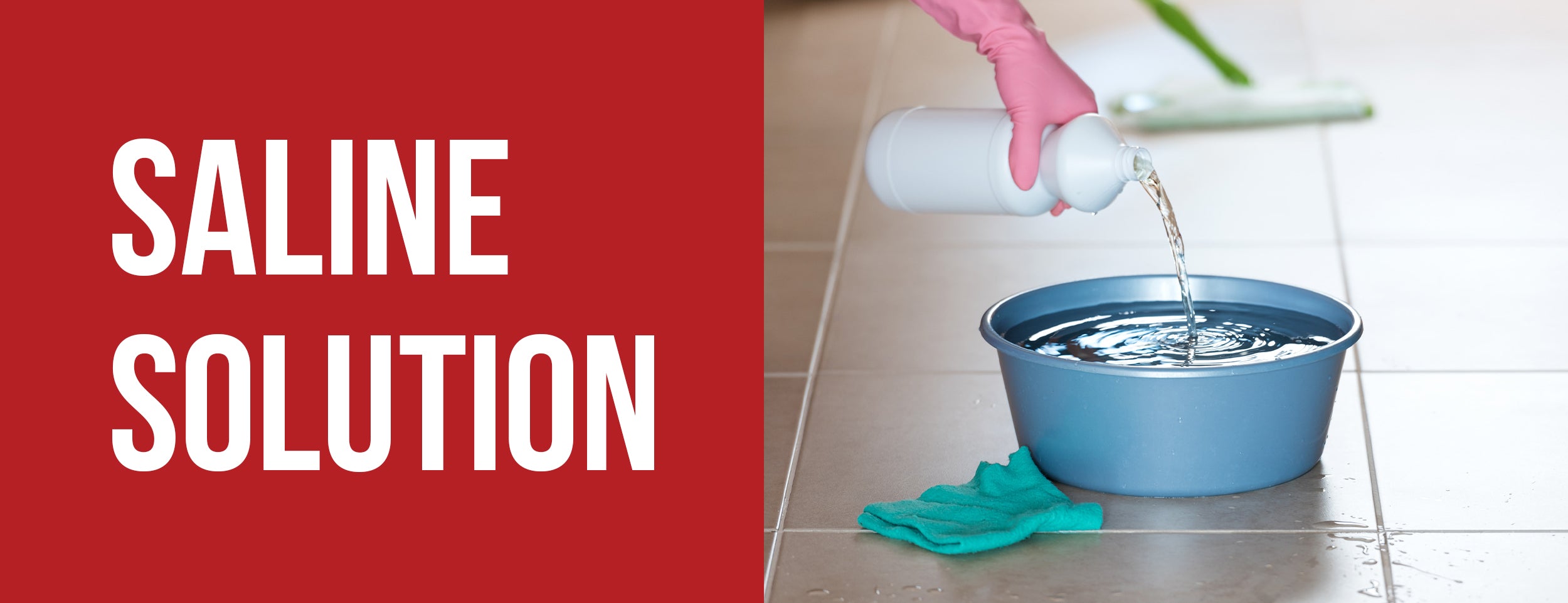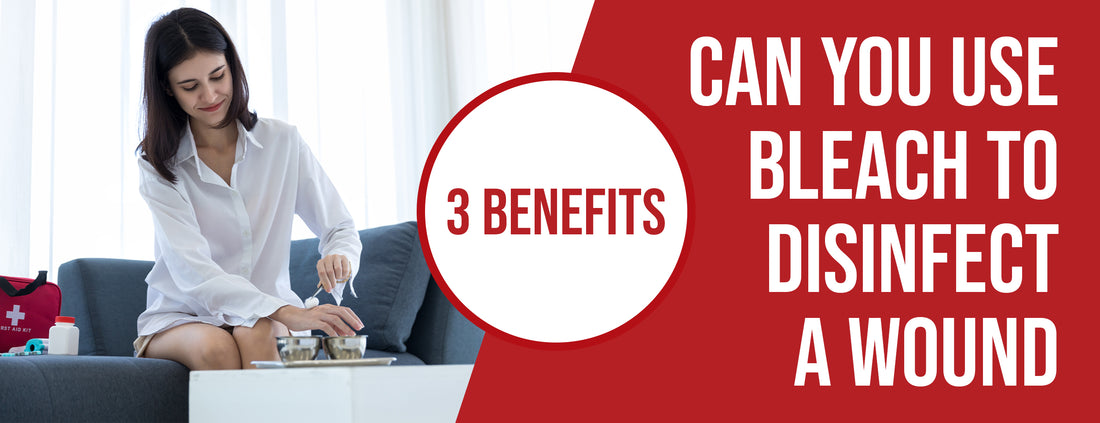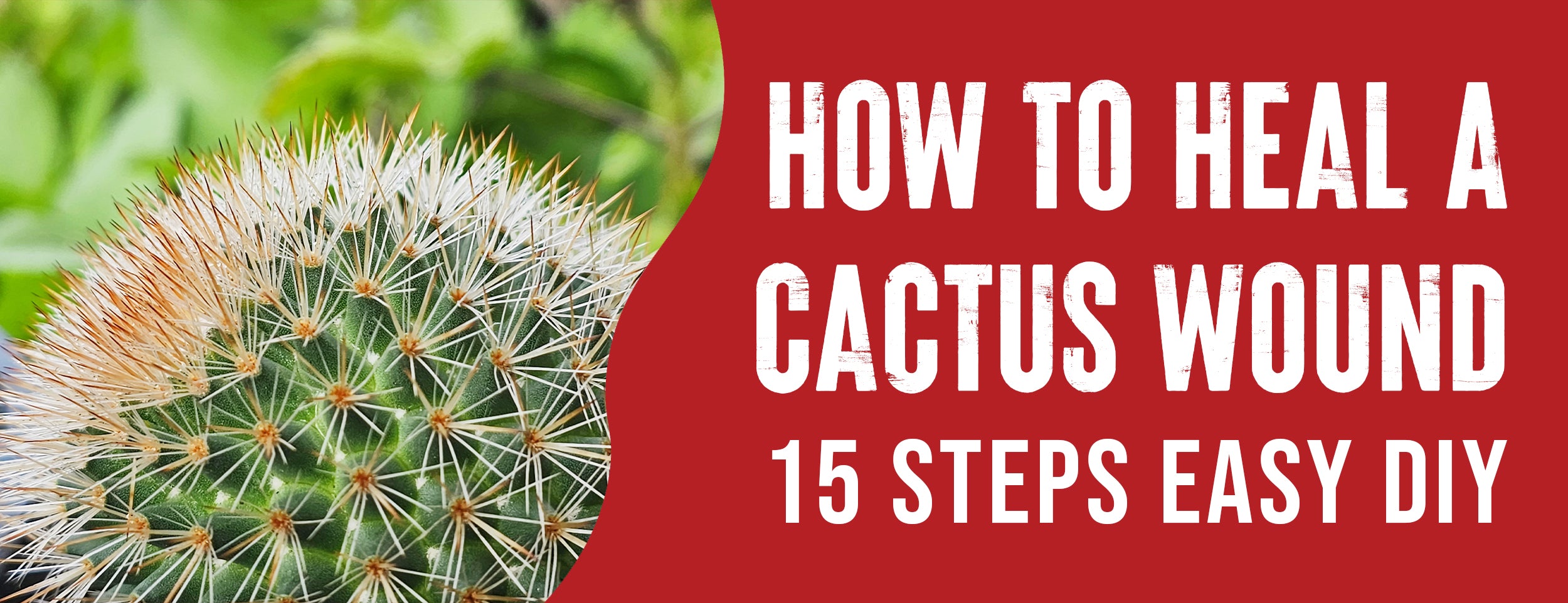Bleach is often considered a household staple for cleaning and disinfecting surfaces, but did you know that it can also be used for wound care? While bleach can be an effective disinfectant for killing bacteria, it's important to use caution when using it for wound care.
The harsh chemicals in bleach can cause irritation and damage to the skin, particularly for individuals with asthma or other respiratory issues. With the right dilution and application method, bleach can be a safe and effective treatment for skin infections such as eczema and impetigo.
In this blog post, we'll explore the benefits and potential dangers of using bleach for wound care and provide you with a step-by-step guide on how to safely disinfect wounds with bleach.
Can You Use Bleach To Disinfection A Wound: 3 Advantage

While bleach is not a recommended first-aid treatment for wounds, there are certain situations where it may be necessary to use it for disinfection.
When No Other Disinfectants Are Available
When other disinfectants are unavailable, bleach can be used. A diluted bleach solution is recommended, as undiluted bleach can cause irritation and potential chemical burns.
- Limited Options: While conventional wound disinfectants and antiseptics may not be available during emergencies or in remote areas, bleach solutions can minimize infection risk.
- Effective When Diluted: Bleach solutions combat bacteria, viruses, and fungi on hard surfaces. Their suitability for wound disinfection depends on proper dilution and application.
- Cautious Approach: Though bleach can be considered when no other option exists, it should be used carefully after considering the potential risks and benefits. To ensure proper wound healing, seek professional care whenever possible.

In Emergency Situations
Bleach as a disinfectant may be necessary in emergencies when medical supplies are limited. The wound must be thoroughly rinsed after bleaching to ensure no harmful residue remains.
- Limited Resources: Bleach can disinfect wounds in natural disasters or remote locations where traditional wound disinfectants are unavailable.
- Immediate Risk Reduction: Bleach can be diluted to reduce the risk of infection during a medical emergency when access to medical supplies and facilities is limited.
- Temporary Measure: Bleach can provide a short-term solution, but professional medical care should be sought as soon as possible to ensure proper wound assessment, treatment, and prevention.
When the Risk of Infection Outweighs the Potential Harm from Bleach

When infection risks significantly outweigh the risk of bleach harm, bleach should only be considered for wound disinfection.
- High Infection Risk:Infections caused by unclean or contaminated environments or wounds that medical professionals cannot treat immediately might require bleaching.
- Cautious Application: When the decision to use bleach is made, it's crucial to dilute it correctly and apply it carefully to the wound. Skin irritation, chemical burns, or other bad stuff can happen if you don't do it.
- Risk Assessment: Before using bleach, individuals should carefully assess the potential risks and benefits, considering the corrosive nature of bleach. The possibility of producing toxic gases when mixed with other chemicals. Professional medical advice is strongly recommended to ensure effective wound care.
Bleach's Effects On Human Skin And Wounds
Bleach can be an effective wound disinfectant, but it should only be used in rare circumstances and as a last resort. The use of bleach on skin or wounds has potentially adverse consequences.
Irritation And Inflammation
Exposure to bleach can result in significant irritation and inflammation on human skin and wounds due to its harsh nature:
- Skin Sensitivity: Bleach is highly caustic and can lead to immediate skin irritation upon contact, causing redness, itching, and discomfort.
- Chemical Burns: When bleach is exposed to your skin repeatedly or concentrated, it can burn your skin, leading to blisters or red welts.
- Mucous Membrane Discomfort: Accidental contact with bleach near sensitive areas such as the eyes, nose, or mouth can cause irritation, redness, and a stinging sensation.
Given the potential for these adverse reactions, it's essential to exercise extreme caution and consider safer alternatives when disinfecting wounds.
Damage To Healthy Tissue:

- Skin Allergic Reactions: Some individuals may experience allergic reactions to bleach, leading to skin burns and irritation that can result in permanent tissue damage.
- Chlorine Toxicity: Chlorine, a bleach component, can be absorbed through the skin and cause toxicity, resulting in skin burns and tissue damage.
- Eye Tissue Damage: Pain, redness, and permanent tissue and nerve damage can result from bleach damage on delicate eye tissues.
Pain And Discomfort:
- Burn-Like Symptoms: Bleach burns cause intense pain, redness, and swelling around the affected area, similar to traditional heat burns.
- Blisters and Skin Damage: Prolonged or concentrated exposure to bleach can lead to the formation of blisters, exacerbating the discomfort and potential for more severe skin damage.
- Long-Lasting Effects: Bleach burns can cause long-term pain and discomfort, making it imperative to seek immediate medical attention to prevent further complications.
While bleach may effectively disinfect wounds under specific circumstances, it should not be considered a first-line treatment option. It is best to consult with a medical professional before using bleach on a wound if possible.
Precautions And Safety Measures When Using Bleach For Wound Disinfection

Proper dilution and preparation:
The correct dilution of bleach is crucial to ensure its effectiveness in wound disinfection while minimizing potential harm. Follow these steps to prepare and use bleach safely:
- Dilution Ratios: Dilute bleach according to recommended guidelines to achieve a safe and effective solution. Bleach is recommended for wound disinfection at a ratio of 1/3 cup per gallon / four teaspoons per quart.
- Precise Measurement: Use measuring tools to ensure that bleach is diluted appropriately, avoiding excessive dilution or concentration.
- Thorough Mixing: Mix the bleach and water thoroughly to create a uniform solution, as uneven mixing can lead to uneven disinfection or skin irritation.
By following these steps, bleach will remain effectively diluted while maintaining its wound care disinfectant properties.
Protective Equipment And Clothing:

Applying bleach for wound disinfection necessitates the use of proper protective gear to ensure your safety and prevent adverse reactions:
- Respirator Usage: Wear a respirator when working in poorly ventilated areas to protect your respiratory system from potentially harmful bleach fumes. A respirator with the appropriate filter, such as an N95 mask, can help ensure you do not breathe in hazardous fumes.
- Eye and Face Protection: Wear goggles or a face shield to protect your eyes and face from bleach splashes. This protective gear will safeguard your sensitive facial areas from direct contact with bleach, reducing the risk of chemical burns or eye irritation.
- Hand Protection: When handling bleach for wound disinfection, it is essential to wear appropriate gloves. Household rubber gloves or neoprene gloves offer a barrier between the bleach and your skin, protecting your hands from potential chemical irritation or damage. Ensure your gloves are in good condition and free from holes or tears.
These precautions protect you and the wound during wound disinfection by mitigating the hazards associated with bleach exposure.
Avoiding Contact With Eyes And Mucous Membranes:
Safeguarding sensitive areas of your body from direct exposure to bleach is paramount to prevent potential harm. Follow these precautions to avoid accidental contact:
- Eye and Face Protection: Wear goggles or a face shield as a preventive measure against bleach splashes. It protects your eyes and faces from being exposed to bleach, which can cause severe and permanent damage.
- Mucous Membrane Care: Bleach exposure to mucous membranes, such as mouth and nose, should be avoided. Even with protective gear, refrain from touching your face with gloved hands that may have encountered bleach, as these sensitive areas are susceptible to irritation and harm.
By taking these preventive steps, you can prevent irritation, burns, or other adverse reactions caused by accidental contact between bleach and sensitive body parts.
Not Using Bleach Together With Other Household Detergents:

Mixing bleach with other household cleaning products can result in harmful chemical reactions and produce toxic fumes. To avoid these risks, adhere to the following guidelines:
- Chemical Reaction Hazard: Avoid mixing bleach with other household cleaners or disinfectants, as this can result in the creation of toxic gases that are potentially lethal. The chemical reactions between bleach and other substances can pose severe health risks.
- CDC's Disease Prevention Advice: Keeping a clean and disinfected environment effectively prevents illness and disease. The CDC recommends the separate use of bleach and other cleaning agents to ensure your safety and the safety of those around you.
You can prevent potentially dangerous chemical reactions by using bleach as a standalone disinfectant without interacting with other household products.
Alternatives To Using Bleach For Wound Disinfection
When considering wound disinfection, several alternatives to bleach can provide effective and safer options:
Antiseptic solutions:
Antiseptic solutions designed for wound care can be an excellent alternative to bleach.
- Gentle Antiseptic Solutions: Antiseptic solutions are mild yet effective alternatives to bleach for wound disinfection. Their goal is to kill or inhibit the growth of microorganisms without harming living tissue. Antiseptic solutions are designed to be gentle on the skin, unlike bleach, which can be too harsh for wounds.
- Varied Formulations: Antiseptic solutions come in various formulations, including iodine-based solutions, hydrogen peroxide, and chlorhexidine. These solutions have been developed specifically for wound care and have proven safe and effective in preventing infections and promoting healing.
- Safer Wound Healing: While bleach is a strong disinfectant, it is unsuitable for wound care due to its potential to damage tissues. Antiseptic solutions offer a safer option for wound disinfection, as they are less likely to cause harm and irritation. Ensure a healthcare professional correctly applies your wound before using an antiseptic solution.
Saline solution:

A saline solution, made by dissolving salt in sterile water, is a gentle yet effective wound cleanser. It helps remove debris, promote healing, and reduce the risk of infection.
- Sterile Saline Solution: Saline solution, commonly called saltwater solution, is a simple and effective alternative to bleach for wound care. It consists of a mixture of sterile water and salt, usually in a specific concentration (0.9% saline) that mimics the body's natural fluids. This solution is gentle on wounds and does not damage tissue.
- Gentle Wound Irrigation: The saline solution is used for wound irrigation and cleaning. It helps to remove debris, dirt, and bacteria from wounds without causing irritation or harm. Its balanced composition promotes a healing environment while reducing the risk of infection.
- Broad Applicability: The saline solution is widely recommended for various wound types, including cuts, abrasions, and minor burns. Saline solution is a safer alternative for wound care than bleach, which is corrosive and unsuitable for wound care. It's important to note that while a saline solution is generally safe, it's advisable to consult a healthcare professional for guidance on its usage and suitability for specific wounds.

Conclusion:
In conclusion, while using bleach to disinfect wounds may be tempting, it is not a safe or effective solution. The use of bleach at high concentrations can cause tissue damage, scarring, and other harmful effects on the skin.Wounds should be cleaned with mild soap and water or with antiseptic solutions.
Remember, proper wound care is essential for preventing infections and promoting healing, so always consult a healthcare professional if unsure how to treat your wound.








![7 Tips To Disinfect Stab Wounds [5 Complications]](http://drnumb.com/cdn/shop/articles/How_To_Disinfect_Stab_Wound__7_DIY_Steps_5_Complications.jpg?v=1715140726)


